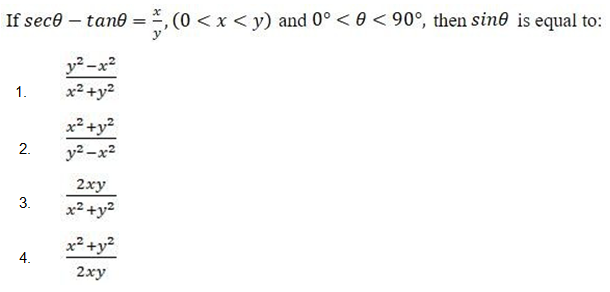Question
Six persons namely – Rahul, Ganesh, Pooja, Dinesh,
Reshma and Hemant are sitting in a circular table facing center but not necessarily in same order. Each person likes different pet Parrot, Horse, Monkey, Cat, Rat and Dog not necessary in same order. Who sits immediate right of the one who likes Rat? I. Reshma sits second to left of Dinesh, who sits third to right of Ganesh. One who likes Dog sits immediate neighbor of Ganesh and sits second to right of one who likes Parrot. One who likes Dog sits immediate right of Rahul who likes Cat. Hemant sits second to left of one who likes Monkey, who sits immediate neighbor of Pooja. II. Dinesh likes Parrot sits second to left of Hemant, who sits second to left of Reshma. Pooja sits second to the left of Rahul, who sits immediate left of one who likes Dog and Rahul likes Cat. The One who likes Horse sit immediate neighbor of Hemant. Reshma likes monkey. Each of the questions below consists of a question and two statements numbered I and II given below it. You have to decide whether the data provided in the statements are sufficient to answer the question:Solution
From I: We have: Reshma sits second to left of Dinesh, who sits third to right of Ganesh and One who likes Dog sits immediate neighbor of Ganesh. One who likes Dog sits immediate right of Rahul who likes Cat, that means one who likes Dog sits left of Ganesh. One who likes Dog sits second to right of one who likes Parrot, that means Dinesh likes Parrot. Hemant sits second to left of one who likes Monkey, who sits immediate neighbor of Pooja, that means Hemant likes Dog. Based on above given information we get: Since, we don’t know who likes Rat, thus result can’t be determined. Hence, statement I is not sufficient. From II: We have: Dinesh likes Parrot sits second to left of Hemant, who sits second to left of Reshma. Pooja sits second to left of Rahul, who sits immediate left of one who likes Dog and Rahul likes Cat. One who likes Monkey sits second to right of one who likes Dog, which means Reshma likes Monkey. One who likes Horse sit immediate neighbor of Hemant, that means Ganesh likes Horse. Reshma likes monkey. Based on above given information we get:

If a + b + c = 12 and ab + bc + ca = 47, and a, b, c are real numbers, find the value of a³ + b³ + c³ − 3abc.
If a + `1/b` = 1 and b + `1/c` =1 , then the value of c + `1/a` is

A sum of Rs. 25,000 is invested in SIP 'G' which offers 7% p.a. simple interest for 7 years. The interest received from SIP 'G' is invested in SIP 'H' w...
If
 = 2 then find
= 2 then find In a best-of-two chess match between Player X and Player Y, the probability that Player X wins a game is (5/9), and the probability that Player Y loses ...
If 10x2 – 6xy+y² – 4x+4= 0, then find the value of (3x+2y).
If x 2 – 15x + 51 = 0, then determine the value of (x – 5) + {1/(x – 5)}.
For a =-4 and b = 5, value of a² – b² is:
Relevant for Exams:


